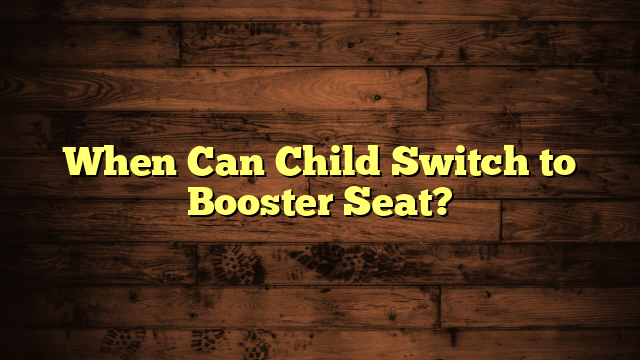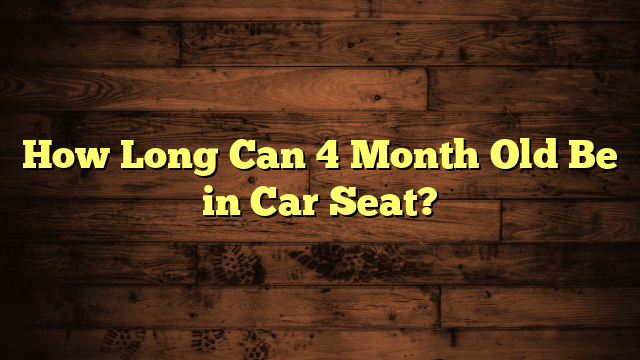When Can Child Use Seat Belt With Booster?
Did you know that the way a seat belt fits can greatly affect a child's safety in a vehicle? Most parents wonder when it's appropriate for their child to move from a booster seat to using just a seat belt. While age and height play key roles in this decision, understanding the nuances of proper fit is equally important. What factors should you consider to guarantee your child is truly ready to make this change? The answer might surprise you.
Key Takeaways
- A child can transition from a booster seat to a seat belt when they reach a height of 4'9".
- Typically, children are ready to use a seat belt alone between ages 8-12, depending on their size.
- Legal requirements for transitioning vary by state; always check local laws for specific guidelines.
- Ensure the seat belt fits properly: the lap belt should sit low on the hips, and the shoulder belt across the chest.
- Regularly assess your child's seat belt fit to ensure safety; improper fit can lead to severe injury in crashes.
Importance of Car Safety
Car safety isn't just a guideline; it's a necessity you can't ignore. Ensuring the safety of everyone in your vehicle, especially children, is a responsibility that weighs heavily on every driver. Proper car safety measures, like using seat belts and appropriate child seats, play an essential role in child protection. Statistics show that the majority of serious injuries in car accidents happen when kids aren't secured properly.
You might think it's enough to just buckle up, but it's important to understand that children need age-appropriate restraints to stay safe. For instance, a standard seat belt isn't designed for small bodies, which is where booster seats come in. They help position the seat belt correctly across a child's body, ensuring it functions effectively during a crash.
Not only do you protect your child physically, but you also set an example for them about the importance of safety. By prioritizing car safety, you're instilling a habit that will stick with them for life.
Understanding Car Seat Types
Choosing the right car seat for your child can feel overwhelming, but understanding the different types can simplify the process. Car seat types are generally categorized into three main groups: infant seats, convertible seats, and booster seats. Each serves a unique purpose based on your child's age, weight, and height.
Here's a quick overview of the car seat types and booster seat options:
| Car Seat Type | Age/Weight Range |
|---|---|
| Infant Seat | Newborn to 30 lbs |
| Convertible Seat | 5 lbs to 65 lbs |
| Booster Seat | 30 lbs to 100 lbs (or more) |
| All-in-One Seat | Birth to 100 lbs (or more) |
Infant seats are designed for the youngest passengers, providing rear-facing protection. Convertible seats can switch between rear and forward-facing, adapting as your child grows. Booster seats elevate your child to fit securely in a vehicle's seat belt. All-in-one seats cover all stages, making them versatile options.
When to Transition to a Booster
Determining the right time to move your child to a booster seat is essential for their safety. You should look for specific booster shift signs that indicate your child is ready. One key sign is when they've outgrown their forward-facing car seat, usually indicated by height or weight limits.
Another sign is if your child can sit comfortably with their back against the vehicle seat and their knees bent over the edge of the seat.
The benefits of using a booster seat can't be overstated. A booster elevates your child, allowing the seat belt to fit correctly across their shoulder and lap. This positioning greatly reduces the risk of injury during a crash.
It's vital that the seat belt lays flat across the shoulder and doesn't dig into their neck or face.
Also, keep in mind that your child should be able to follow instructions and stay seated properly while the vehicle is moving.
Shifting to a booster seat is a significant step in ensuring your little one is safe and secure in the car. Always prioritize their safety and consult your car seat manual for specific guidance.
Age and Weight Guidelines
When it comes to using a booster seat, understanding age and weight guidelines is essential for your child's safety.
Most states have legal requirements that dictate the minimum age and weight for moving to a booster, so it's important to be aware of those rules.
Furthermore, safety standards play a significant role in ensuring that your child is protected while riding in a vehicle, so let's explore these factors in more detail.
Legal Age Requirements
Understanding the legal age requirements for using a booster seat is essential for your child's safety. Each state has different legal regulations regarding when your child can shift from a booster seat to just using a seat belt. Here's a quick reference to help you navigate these state variations:
| Age Requirement | Typical Age Range |
|---|---|
| Booster Seat | 4-8 years old |
| Seat Belt Only | 8-12 years old |
While many states require children to be at least 4 years old to use a booster seat, some may have stricter guidelines. It's vital to check your local laws, as these regulations can vary greatly. Generally, children should remain in a booster seat until they are tall enough (usually around 4'9") for the seat belt to fit correctly across their lap and shoulder.
Keep in mind that even if your state allows the use of a seat belt alone at a certain age, it's safer for your child to stay in a booster seat until they reach the recommended height. Prioritizing your child's safety by understanding these legal age requirements can make a considerable difference.
Weight Limit Considerations
Choosing the right time for your child to move from a booster seat to just using a seat belt involves considering both age and weight guidelines.
Booster seat regulations typically recommend that children stay in a booster seat until they reach a weight of around 40 pounds, but this can vary based on your specific seat. Always check the manufacturer's recommendations for your booster.
Weight distribution factors play an important role here, too. A heavier child may be able to shift sooner, while a lighter child might need to stay in a booster longer, even if they meet the minimum age.
It's vital to guarantee that the seat belt fits properly across your child's body. The lap belt should sit low across their thighs, not their stomach, and the shoulder belt should rest comfortably across their chest and shoulder.
Safety Standards Importance
Recognizing the importance of safety standards is essential when deciding if your child is ready to move from a booster seat to just a seat belt. Safety regulations are in place to guarantee child protection, and they provide clear guidelines based on age and weight. Generally, children should remain in a booster seat until they reach the height of 4 feet 9 inches and are between 8 and 12 years old.
These guidelines aren't arbitrary; they're based on extensive research into how children are best protected during a car ride. A seat belt, while designed for adults, may not fit a child properly without a booster seat, leading to ineffective restraint and increased injury risk in an accident.
It's vital to assess your child's size and weight regularly, as each child develops at their own pace. Don't rush the process; make sure your child meets the necessary criteria before making the change.
Following safety regulations isn't just about compliance—it's about safeguarding your child. Remember, their safety is your top priority, so take the time to evaluate all factors before shifting them from a booster seat to a seat belt.
Proper Booster Seat Usage
When it's time to shift your child from a car seat to a booster seat, guaranteeing proper usage is vital for their safety. A booster seat raises your child so that the seat belt fits correctly across their body, which is key for effective protection in case of an accident.
Always check the safety regulations in your area to verify compliance with age, height, and weight requirements for booster seats.
When installing the booster seat, place it in the back seat of your vehicle, as this is the safest location for children. Confirm the seat is secured tightly and doesn't move more than an inch in any direction.
Your child should sit all the way back in the booster seat, with their back against the vehicle seat. The lap belt should rest low across their hips, while the shoulder belt should cross their chest and shoulder, avoiding the neck.
Finally, remind your child to stay seated with their back against the booster seat at all times. These steps will help guarantee that your child is as safe as possible while using a booster seat, giving you peace of mind during every trip.
Seat Belt Fit and Safety
When it comes to seat belt fit and safety, proper positioning is essential for your child's protection.
You need to take into account age and weight requirements to guarantee the seat belt fits snugly across their lap and shoulder.
A well-fitted seat belt not only boosts safety but also gives you peace of mind on the road.
Proper Seat Belt Position
Proper seat belt position is imperative for ensuring your child's safety in a vehicle. When using a booster seat, it's important to focus on seat belt positioning to provide the best protection during a crash. The lap belt should fit snugly across your child's upper thighs, not their stomach. This placement helps to prevent serious injuries in the event of a sudden stop or collision.
Meanwhile, the shoulder belt needs to rest across the middle of your child's chest and shoulder, away from their neck. If the belt doesn't fit properly, it could lead to severe injuries.
For effective booster seat placement, make sure the booster is installed correctly and that your child can sit against the back of the vehicle seat with their knees bent comfortably. Always check that your child can maintain this position without slouching.
A proper fit is essential; if the seat belt is too loose or positioned incorrectly, it could compromise your child's safety. Ultimately, ensuring your child is securely buckled with the right seat belt positioning is an important step in keeping them safe on the road.
Age and Weight Requirements
Understanding age and weight requirements is essential for determining when your child can move from a booster seat to just using a seat belt. Each state has specific booster seat regulations, but generally, most children can shift to a seat belt between the ages of 8 and 12, provided they weigh at least 80 pounds.
However, these numbers can vary, so it's important to check local laws and guidelines.
Child safety recommendations emphasize that your child should be able to sit with their back against the vehicle seat, knees bent comfortably over the edge, and the seat belt should lie across the upper thighs and chest, not the stomach or neck.
If your child doesn't meet these criteria, it's safer to keep them in a booster seat until they do.
Common Myths and Misconceptions
Many parents believe that once a child reaches a certain age, they can simply use a seat belt without a booster seat. This is a common misunderstanding. In reality, many safety misconceptions exist around booster seats that can put your child at risk.
For instance, some folks think that if a child can sit in the back seat, they're safe enough with just a seat belt. That's not true; the seat belt is designed for adult-sized bodies, and kids often need that extra height from a booster to guarantee proper fit and protection.
Another booster myth is that once a child hits a specific weight, they don't need a booster anymore. While weight is a factor, your child's height and the fit of the seat belt are just as important. The shoulder belt should rest across the shoulder and not the neck, and the lap belt should sit low across the hips.
Understanding these facts can help you make safer choices for your child. Always check your local laws and consult safety guidelines to guarantee your child is properly secured in a vehicle.
Frequently Asked Questions
Can a Child Use a Booster Seat in Any Car Model?
You can use a booster seat in most car models, but always check booster seat regulations for specific compatibility. Ensuring the seat fits properly is essential for your child's safety during every ride.
What Are the Signs a Booster Seat Is No Longer Needed?
When your child's shoulders pass the booster seat's back, or they can sit with their back against the car seat, they might no longer need it. Always check booster seat laws and follow child safety guidelines.
Are Booster Seats Required in Ride-Sharing Services?
In ride-sharing services, booster seat regulations vary by location. You should check local ride-sharing policies to guarantee compliance, as some companies might require booster seats for younger passengers while others may not enforce strict rules.
How Do Weather Conditions Affect Booster Seat Safety?
Weather's like a silent partner in safety, shaping your child's ride. Rain, snow, or heat impacts booster seat effectiveness, so always check conditions. A secure fit in adverse weather can make all the difference. Stay vigilant!
Can a Child Use a Booster Seat Without a Backrest?
A child can use a booster seat without a backrest, but you should check booster seat guidelines and safety regulations. Many experts recommend backrest options for better support and alignment during car rides.
Conclusion
In summary, ensuring your child shifts to a seat belt at the right time is essential for their safety. Did you know that using a booster seat can reduce the risk of serious injury by up to 45% for children aged 4 to 8? By understanding the guidelines and ensuring proper seat belt fit, you can greatly enhance your child's protection in the car. Stay informed, make smart choices, and keep your little ones safe on the road.
- Can I Get in a Taxi Without a Car Seat? - January 26, 2025
- Can I Get Chlamydia From a Toilet Seat? - January 26, 2025
- Can I Get an Uber With a Car Seat? - January 26, 2025






